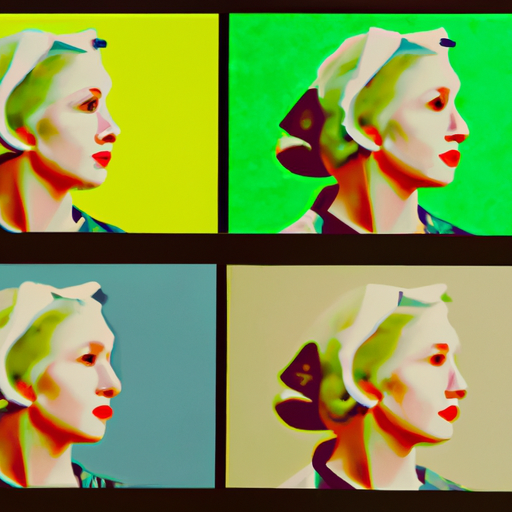
-
Table of Contents
- Crafting Visual Narratives through Graphic Collages
- The Power of Visual Narratives
- The Art of Graphic Collages
- 1. Storyboarding
- 2. Selecting the Right Images
- 3. Balancing Composition
- 4. Typography and Text
- 5. Color and Mood
- Real-World Examples
- 1. Nike’s “Dream Crazy” Campaign
- 2. National Geographic’s Instagram Account
- 3. The New York Times’ Visual Stories
- Key Takeaways
Crafting Visual Narratives through Graphic Collages

Visual storytelling has become an essential tool for communication in today’s digital age. With the rise of social media platforms and the increasing demand for engaging content, crafting visual narratives has become a powerful way to captivate audiences and convey messages effectively. One technique that has gained popularity in recent years is the use of graphic collages. In this article, we will explore the art of crafting visual narratives through graphic collages, examining their benefits, techniques, and real-world examples.
The Power of Visual Narratives
Visual narratives have a unique ability to capture attention and evoke emotions. They combine the power of images, colors, and design elements to tell stories that resonate with viewers. According to a study by the Social Science Research Network, people remember 65% of information when it is paired with relevant visuals compared to only 10% when presented without visuals.
Visual narratives can be used in various contexts, such as marketing campaigns, social media posts, presentations, and even personal storytelling. They allow individuals and brands to convey complex ideas, evoke empathy, and create a lasting impact on the audience.
The Art of Graphic Collages
Graphic collages are a creative way to craft visual narratives. They involve combining different elements, such as images, illustrations, typography, and textures, to create a cohesive and visually appealing composition. Graphic collages offer a unique opportunity to experiment with various styles, colors, and textures, allowing storytellers to create visually stunning and engaging narratives.
When creating a graphic collage, it is essential to consider the following techniques:
1. Storyboarding
Before diving into the creation process, it is crucial to plan the narrative structure of the collage. Storyboarding involves sketching out the sequence of images and elements to ensure a coherent flow of the story. This technique helps in organizing ideas and ensuring that the narrative is visually compelling.
2. Selecting the Right Images
The choice of images plays a vital role in conveying the intended message. It is essential to select images that align with the narrative and evoke the desired emotions. High-quality and visually striking images can significantly enhance the impact of the collage.
3. Balancing Composition
Creating a visually appealing composition is crucial in graphic collages. Balancing the placement of images, illustrations, and typography helps guide the viewer’s eye and maintain their interest. Techniques such as the rule of thirds, symmetry, and leading lines can be employed to create a harmonious composition.
4. Typography and Text
Typography and text can add depth and context to the visual narrative. Choosing the right fonts, sizes, and colors can enhance the overall aesthetic and ensure that the text is easily readable. It is important to strike a balance between the visual elements and the textual content to create a cohesive narrative.
5. Color and Mood
Colors play a significant role in setting the mood and evoking emotions in a visual narrative. The choice of color palette should align with the intended message and the emotions the storyteller wants to convey. Warm colors like red and orange can evoke excitement and passion, while cool colors like blue and green can create a sense of calmness and tranquility.
Real-World Examples
Let’s explore some real-world examples of graphic collages that effectively craft visual narratives:
1. Nike’s “Dream Crazy” Campaign
Nike’s “Dream Crazy” campaign, featuring former NFL quarterback Colin Kaepernick, utilized graphic collages to convey a powerful message about perseverance and breaking barriers. The campaign combined striking images of athletes, bold typography, and vibrant colors to create a visually compelling narrative that inspired millions.
2. National Geographic’s Instagram Account
National Geographic’s Instagram account is a treasure trove of visually stunning graphic collages. They use a combination of breathtaking images, informative captions, and creative layouts to tell stories about wildlife, nature, and culture. Each collage is carefully crafted to engage the audience and evoke a sense of wonder.
3. The New York Times’ Visual Stories
The New York Times’ visual stories section showcases the power of graphic collages in journalism. They combine images, videos, and interactive elements to create immersive narratives that bring news stories to life. The use of graphic collages allows them to convey complex information in a visually engaging and easily digestible format.
Key Takeaways
Crafting visual narratives through graphic collages is a powerful way to captivate audiences and convey messages effectively. Here are the key takeaways:
- Visual narratives have the ability to capture attention and evoke emotions.
- Graphic collages combine different elements to create visually appealing compositions.
- Storyboarding helps in planning the narrative structure of the collage.
- The choice of images, typography, colors, and composition is crucial in creating a cohesive narrative.
- Real-world examples, such as Nike’s “Dream Crazy” campaign and National Geographic’s Instagram account, showcase the effectiveness of graphic collages.
By mastering the art of crafting visual narratives through graphic collages, individuals and brands can create compelling stories that leave a lasting impact on their audience.
